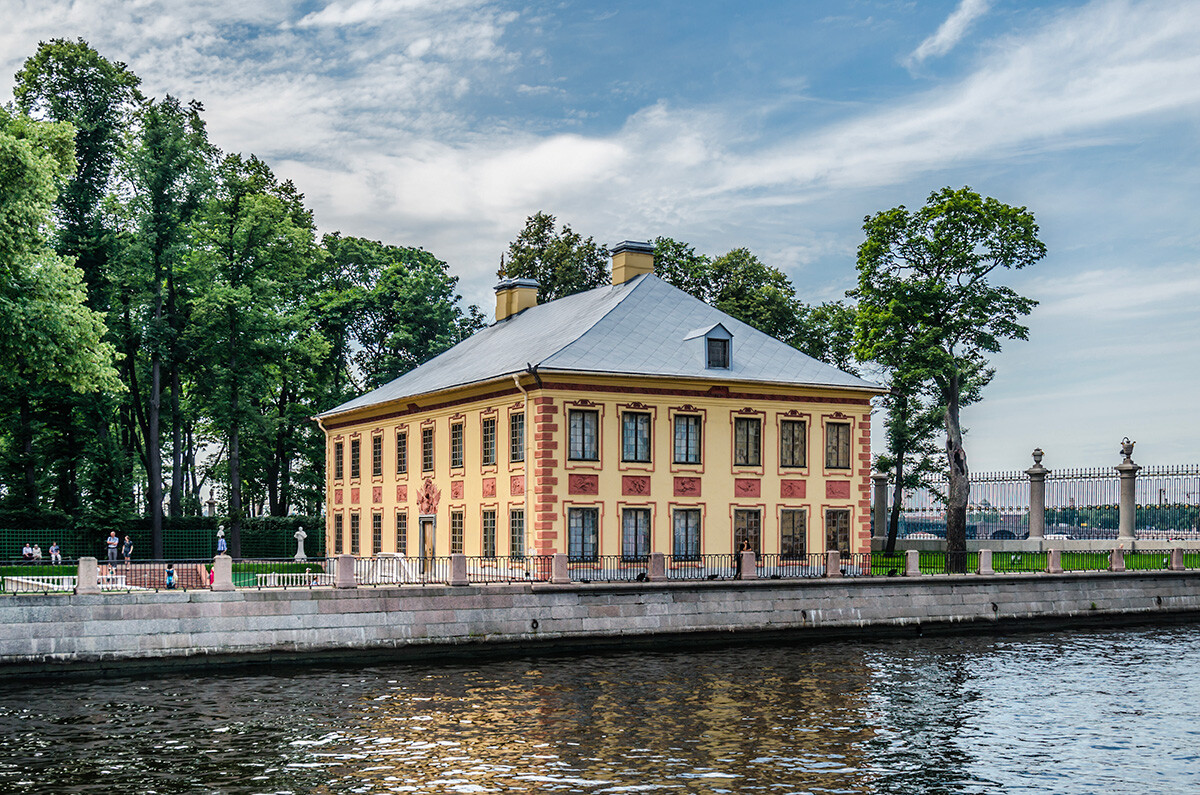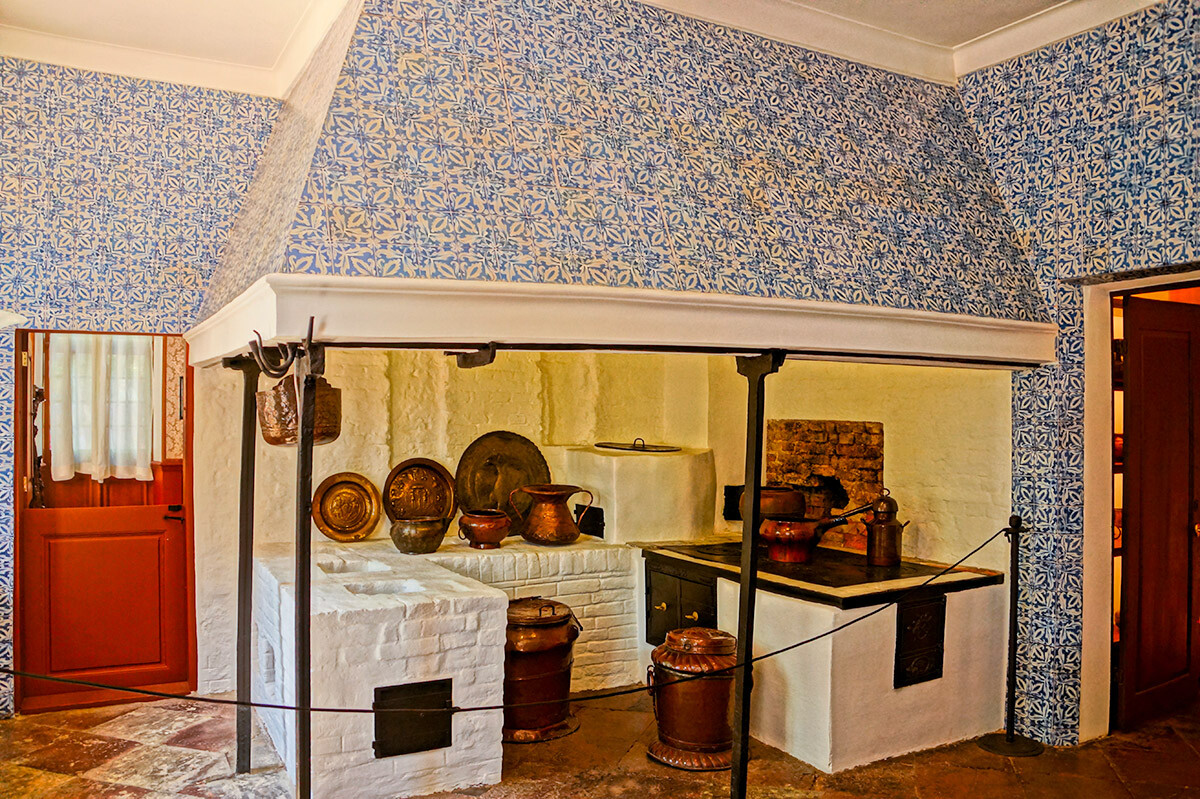

It is no coincidence that this house on the Petrograd Side was known as the original palace. This is the first building in St. Petersburg, which was erected for Peter I in just three days.

He lived there only during the warm season until the Summer Palace was built. Little has changed over the past centuries: the door paintings have been preserved and the walls are still covered with canvas.

This mansion was built in 1710-1714: Peter I would live there from May to October. It was the personal residence of the emperor and his family.

The monarch's chambers were on the first floor, while Catherine I lived on the second. The rooms of the palace have also well preserved the furnishings of Peter the Great's time.

For over 140 years, this palace served as the winter residence of Russian emperors. This is the fifth building to bear this name: work on it was completed under Catherine II.

In 1764, more than 300 paintings from the collection of Johann Ernst Gotzovsky were brought there from Berlin, which became the basis for the future museum. And they were placed in rooms called the ‘Hermitage’.

The decree on the construction of this palace was one of the first issued by Emperor Paul I. He worked on its architectural design himself, while still the Grand Duke. The monarch chose a difficult place for the construction: the old Summer Palace, in which he was born, stood there. For Paul I, the castle was not only an imperial residence, but also his palace as the Grand Master of the Order of Malta.

Paul only managed to live in the "palace of dreams" for 40 days: On the night of March 12, 1801, he was killed in his own chambers.

The oldest building on Nevsky Prospect was originally intended for Alexei Razumovsky, the favorite of Elizabeth Petrovna. Over the years, the palace became a wedding gift - this is how Grand Duke Nikolai Pavlovich, the future Nicholas I, became its owner.

He lived there during Lent and, during the renovation of the Winter Palace, Anichkov Palace became the winter residence of the imperial family for some time. Later, Alexander III chose it as his main home.

The luxurious palace on the shore of the Gulf of Finland was the center of court festivities and the main summer imperial residence. Elizabeth Petrovna began to rebuild Peter's “modest” palace, while preserving her father's Oak Study. And Catherine II held magnificent celebrations there every year on Peter's Day.

The interiors of the palace are striking with their richness: the Ballroom literally shines with gold, while the Chinese Cabinets are responsible for the exoticism.

‘My pleasure’ - this is the name Peter I gave to this Peterhof palace. He chose the place for it himself - on the very seashore. And he drew a plan: the emperor wanted the building to resemble a ship, ready to set off on a voyage across the stormy sea.

He loved to relax there, saying that "nowhere can I relax as much as in Monplaisir and, in my dreams, I see the sea and ships." From the outside, the building looks more like a Dutch house than a palace, but this impression is deceptive. Inside, it is furnished with royal luxury. The Chinese Cabinet was the first of its kind in Russia, as well as the collection of Western European paintings collected by Peter I.
Nicholas I admitted: "I relax only in my beloved Peterhof." The private residence of the emperor and his family was located far from the splendor of the Grand Palace.
A small neo-Gothic palace with balconies, bay windows and terraces became the center of the Alexandria Park. There, the emperor was not an autocrat, but, in his own words: "The husband of a Peterhof landowner."
In the 1830s, this country house with a cowshed and a two-storey residential extension in Peterhof was occupied by Tsesarevich Alexander. And, in 1860, it became the official Farm Palace of Alexander II.
It was the only building erected for this monarch. There, the emperor worked on a bill to abolish serfdom.
Catherine II's private dacha in Oranienbaum is decorated in the chinoiserie style and features Chinese and Japanese lacquer furniture, porcelain and mirrors.
And its pearl is the Glass Bead Cabinet with panels embroidered with silk thread and glass beads.
This small mansion with windows overlooking the sea is considered one of the oldest buildings in Strelna. Peter I would stop there on his way to Peterhof or Kronstadt.
A vegetable garden, an orchard and an apiary were laid out for him there - so that the dishes the emperor was served contained the produce grown there.

The first royal owner of this palace was Paul I - Catherine II bought the estate for him from the heirs of her favorite Grigory Orlov. Having rebuilt it to his own taste, Paul turned it into an impressive fortress with bastions and a moat surrounding the palace and, in front of it, he laid out a large parade ground.

Nicholas I left the rooms that belonged to his father unchanged. He went there to hunt and hold balls and receptions. Gatchina Palace also became Alexander III’s main residence.

This magnificent palace was built by order of Catherine I and, under Elizabeth Petrovna, it acquired its current solemn appearance. Resembling a precious box on the outside, it amazed with the luxury of its interiors.

Catherine II did not have much love for the palace, at first: “Empress Elizabeth decided to gild it inside and out; there is not a single comfortable chair in it…”, she grumbled. During her reign, magnificent state rooms were built there, including the Arabesque Drawing Room. Alexander I also liked to stay at the Catherine Palace. The main decoration of the palace was the Amber Room, a gift to Peter I from Prussian King Friedrich Wilhelm.

When visiting Tsarskoye Selo, Nicholas I stayed at the Alexander Palace. And, for Nicholas II, it became a permanent residence from 1905.

The Alexander Palace was not chosen by chance: it was there that the last Russian emperor was born. From there, in 1917, he and his family left for Tobolsk.

Pavlovsk Palace became the imperial residence in 1796, when Tsesarevich Pavel Petrovich ascended the throne.

The complete opposite of the splendor of the Catherine Palace in Tsarskoye Selo, this mansion on the banks of the Slavyanka looked much more modest. Its rooms housed an extensive collection of works of art, furniture and ceramics that Pavel and his wife brought back from their travels around Europe.
Dear readers,
Our website and social media accounts are under threat of being restricted or banned, due to the current circumstances. So, to keep up with our latest content, simply do the following:
If using any of Russia Beyond's content, partly or in full, always provide an active hyperlink to the original material.
Subscribe
to our newsletter!
Get the week's best stories straight to your inbox